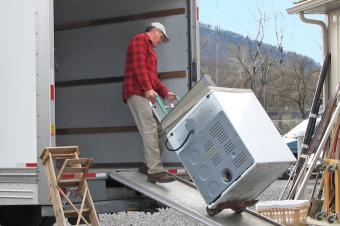
If the ultimate amateur Johnny Appleseed could pluck a few seeds from an apple and grow thousands of apple trees with only a hope and a prayer, then you can store seeds like a pro. Take your gardening skills to the next level by learning how to store seeds and which conditions they like best.
How to Store Seeds & Create an At-Home Seed Bank
You don’t have to be a homesteader to enjoy growing plants and veggies from seed to sprout. Up the ante in your gardening practices by giving seed storage a try. There’s not a ton of labor or specialized materials involved, so anyone can make their seed bank dreams come true.
Dry Your Seeds Before Storing Them
Before worrying about what you’re going to store your seeds in, you need to dry them out. This goes for both bought seeds and harvested ones. Your gut instinct might be to leave them out in the sun for a day or two. But there’s a safer way to pull the moisture from your seeds.
You don’t need fancy equipment to prep your seeds for storage. Pull out a tray, baking dish, large pan, or anything that’s wide enough for you to spread all the seeds out without any crowding. Then, leave them in the open air for a few days. Stir and flip the seeds at least once a day to make sure that the unaired parts are exposed.
Some people like to lay parchment paper, wax paper, or paper towels underneath the seeds as they dry for easy removal or to help leech the water out quicker. Experiment to see which process works best for you.
Drying times vary, but you’ll know they’re ready for storage when they’re hard and brittle.

Depending on the weather in your area, you may want to use a dehumidifier or fan to keep humidity low and temps cool.
Low Humidity & Temperature Make the Perfect Conditions
The whole goal of storing seeds is that you’ll be able to use them in the future. To give your seeds a fighting chance, there are two main conditions you need to meet:
- Low humidity: Seeds have a good chance of germinating even after a few years if you keep them in an area with 8% moisture or less. Seeds need water to grow, and you don’t want them to start that process before you’re ready.
- Low temperature: Just like moisture, seeds need sunlight and warmth to help them germinate. If you want them to stay dormant but viable, then you should try to keep your seeds stored in a place that’s lower than 40°F (4.5°C).
Although you can store seeds outside of these parameters, you might find that the longer you keep them in storage, the less likely they are to germinate.
Don’t Forget to Keep Things Dark
When you’re planting seeds, you usually want as much sunlight as possible. So, it makes sense that the reverse would do the same when you’re storing them. Keep your stored seeds out of direct sunlight and somewhere nice and dark.
5 Ways to Store & Organize Your Seeds
What you put your seeds in when they’re hibernating is just as important as the temperature or humidity. That doesn’t mean there aren’t multiple options! These are just a handful of the many things you can store seeds in.

- Drop your seeds in envelopes or paper bags. This is an age-old method for storing all kinds of seeds.
- Store seed packs in a card-collecting binder. Card-collecting binders let you keep your seeds highly organized, especially if you’re working with pre-packaged ones.
- Use filing folders to bundle similar seeds together. This might be an unconventional way, but some people like to keep their envelopes of seeds in filing folders.
- Store them in air-tight containers. If you want something more aesthetic than plain envelopes, air-tight containers are the way to go. This is a great choice if you’re only storing a few types of seeds.
- Store bundles of seeds in sewing boxes or craft bins. If you’re bulk storing, packing your seeds into something easily accessible is one way to cut down on space.
Where to Store Your Seeds
Keeping in line with the consistently dark, cool, and lower humidity environment, places like garages, basements, closets, internal pantries, or even in your refrigerator are all great options for storing seeds. There’s no one “right” place to store your seeds, and any of these will work.
When picking your location, look for somewhere that can stay within 32°F-50°F (0°C-10°C). That’s the ideal temperature to keep seeds, according to the New York Botanical Garden.
How Long Can You Store Seeds For?
The storing standard for most seeds is a year. In the right temperature and humidity-controlled conditions (tailored to each type of seed’s preference), you can make your seeds last as long as a decade in storage. However, the longer you leave them in storage, the higher the chance is that they won’t all come out of hibernation.
Seed Storage Saves Time
Like meal prepping, storing seeds can save you time. Sure, there’s some labor and time involved. But, once you get things set up how you like, you’ll build a new planting and storing routine that you’ll never want to deviate from.







